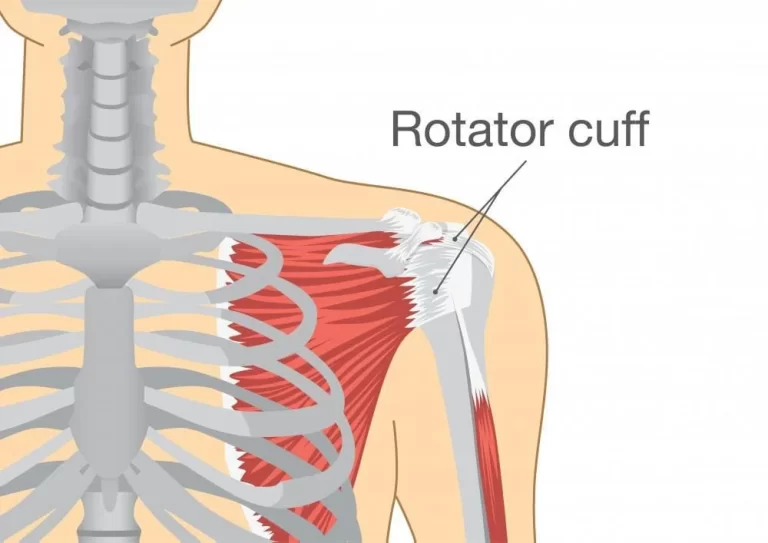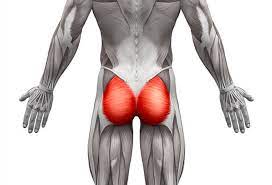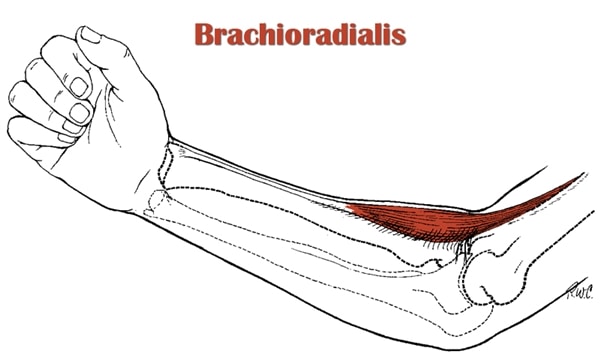How to sleep with Biceps Tendonitis?
The common and excruciating condition known as bicep tendonitis damages the shoulder joint and reduces its range of motion. You might experience pain, oedema, and stiffness if you have bicep tendonitis, especially at night. Bicep tendonitis can make it difficult to sleep, but there are ways to lessen pain and improve the quality of your sleep.
Table of Contents
What is Biceps Tendonitis?
Bicep tendonitis, a frequent ailment brought on by inflammation of the upper bicep tendon, may be the source of your pain.
Causes of Biceps Tendonitis:
Everyday activities like lifting, driving, cleaning, and more put a lot of strain on our biceps. Over time, all that daily use mounts up and can occasionally cause tendinitis. Bicep tendonitis is typically brought on by aging rather than an injury.
Naturally, repetitive motions might worsen the problem more quickly. You may be more likely to get bicep tendonitis if you engage in sports like tennis or baseball, often go swimming, or hold a job that needs repetitive shoulder motion, such as being a hairstylist, mechanic, or warehouse worker.
Symptoms of Biceps Tendonitis:
When you move, your front shoulder becomes more sore and painful.
Upper arm bone pain that starts in the shoulder and travels down it
shoulders that feel like they are snapping
Treatment:
Bicep tendonitis is fortunately fairly curable, frequently without surgery. Our doctors will collaborate with you to choose the most conservative course of action for regaining your shoulder’s pain-free functionality.
Rest, ice, and over-the-counter anti-inflammatory drugs may be sufficient for the majority of individuals to reduce inflammation and experience relief.
We frequently recommend steroid injections and physical therapy for more severe cases to aid in tendon healing.
Arthroscopy is a component of surgical treatment for surgery.
How Can Shoulder Pain Affect Sleep?
It relies on your typical sleeping habits, the intensity of your discomfort, and the source of your shoulder pain to determine how to manage your sleep while experiencing shoulder pain.
Three factors that affect the cycle of sleep pain that you can regulate include:
- Levels of pain
- Position
- Lifestyle
Controlling your pain:
Your brain does a wonderful job of distracting you from discomfort during the day. You can push the discomfort to the back of your mind by concentrating on whatever is happening in your daily activities, but at night this stops working! With shoulder pain, falling asleep might seem nearly difficult at times, which is why using medications to dull the discomfort is a smart first step.
Here are some suggestions for utilizing medicines to control your discomfort at night:
- Timing is Everything: If you don’t pay attention to when you take your meds, you can find that your painkillers start to wear off right when you’re attempting to fall asleep. Even worse, you might already have taken the maximum recommended amount of pain medication each day and be compelled to try to go sleep without it. You should take your prescription between 30 and an hour before going to bed.
- Save the Stronger Stuff – In general, we advise taking the lowest dose of analgesics that controls your pain, as opiates and other strong painkillers can have negative effects and become addictive at higher doses. Save the highest dose of your painkillers for the evening when you’re weaning off them so that you won’t have to worry about falling asleep and your nighttime pain will be easier to manage.
- Hot or Cold Packs – Use an ice pack (or frozen peas) right before going to bed. Try using a hot water bottle if a muscular soreness is keeping you from sleeping.
Positions when pain occurs while sleeping:
The likelihood is that if you have tendonitis, you avoid putting pressure on it because it hurts. The same is true for rotator cuff issues and shoulder impingement. Even though a shoulder impingement or tendonitis may not be visible from the outside, you can still experience pain within.
Although side sleepers may find it more challenging to find a comfortable sleeping posture when they have shoulder pain, even back or front sleepers frequently have their arms in an uncomfortable position. How do you manage, then?
Certain sleeping postures can put additional strain on your shoulder and exacerbate pain since increased pressure on the shoulder can make it feel worse. If you suffer pain from tendinitis, you should avoid the following sleeping positions:
- Side sleeper: If you’re like the majority of people, you probably sleep on your side. In actuality, 74 percent of people find themselves dozing off while sleeping on their sides. Switching positions might be challenging if you have shoulder pain, whether from rotator cuff damage or shoulder impingement. When you sleep on your side, the strain from your body weight can aggravate shoulder pain and possibly cause your arms to drift off to sleep. It’s advisable to switch to sleeping on your back and try to avoid resting on the shoulder that is hurting.
- Sleeping on the side: When it comes to shoulder impingement, lying on your side when you sleep is the worst possible option. However, you ought to think about resting on a shoulder that isn’t in discomfort if this is the only way you can get some rest.
- Depending on whether you are resting on your side with shoulder pain or not, your sleeping position while experiencing shoulder pain will vary if you are a side sleeper.
- Place one pillow directly in front of your chest and another one on top of it so that it goes under your affected arm when you are laying on your non-affected side. Your arm will be raised as a result, relieving stress on the shoulder joint.
- Sleeping on the side: When it comes to shoulder impingement, lying on your side when you sleep is the worst possible option. However, you ought to think about resting on a shoulder that isn’t in discomfort if this is the only way you can get some rest.
- Stomach sleeping: People who sleep on their stomachs and have shoulder impingement or rotator cuff damage may also experience pain. This is due to the fact that sleeping on your stomach causes your shoulders to fall forward, putting strain on your neck and shoulders.
- Back sleepers: If you typically sleep on your back with your arms by your sides, the pressure on your shoulder joint may increase.
- With your elbow bent, cross your affected arm over your stomach while supporting it with a cushion. Your arm will be raised as a result, which will assist relieve shoulder strain.
- Though it’s best to avoid doing so, you can try utilizing pillows to lessen some of the strain. Lay a flat pillow beneath you at waist level, leaving some space between it and the pillow you are using for your head. This helps to relieve pressure by giving you a space between the cushions to place the injured arm.
The best sleeping positions for shoulder pain are:
The best way to manage shoulder pain at night is to change your sleeping position; if you often lie on the side that is hurt, this will make your shoulder pain worse. Some patients try to lie on the shoulder across from them, but even this might make the shoulder that is hurting sag forward or backward, which can make the discomfort worse.
When you lie on your back, the affected shoulder may drift backwards as you sleep, which may irritate it. When people lie on their front, they frequently raise their arms and place their hands above their heads, but this is a horrible position for your shoulders, especially if they are already in pain.
Pillows can occasionally help you achieve a better sleeping position by supporting or relieving the burden on the troubled shoulder.
Sleep on the side that isn’t hurt:
Your sleeping position could either be the solution to your shoulder pain or a major cause of it. More than half of us sleep on our sides, which adds weight to the shoulder and increases the strain. People normally avoid sleeping on the afflicted shoulder because, in most cases, the pressure can make the discomfort worse.
While it is recommended that you sleep on your unaffected side, you may want to consider getting a new pillow to support your favorite sleeping position. In order to maintain the upper body in the correct position, side sleepers frequently benefit from a firm pillow that is fluffy enough to occupy the area between their bed and head.
Sleep on the back:
It is the most effective position for preventing shoulder impingement. Your shoulders, neck, and back experience little to no strain while you sleep on your back. This neutral position can offer a pain-free resting position for shoulder pain and aid in maintaining the alignment of your spine. To pull your shoulders back and widen your chest, you might also want to think about putting a small pillow underneath them.
Instead of swapping sides as you sleep, make a commitment to sleeping in a posture that is more supportive of your shoulders. The best resting posture for shoulder pain is on your back with your bent elbow supported by a small cushion or rolled towel underneath, and your hand draped on a pillow on top of your tummy. Because it places the least amount of strain on the rotator cuff and supporting structure, this is the best sleeping position.
Stomach sleeping:
While shoulder impingement pain from stomach sleeping can worsen, pain can be relieved with the right support. Pillow your hips and pelvis if you need to sleep on your stomach to get a decent night’s sleep. To stop your shoulders from sagging, do this to align your lower body with your upper body. For additional support, you might put a towel or blanket beneath your shoulders.
Suggestions for easing shoulder discomfort while sleeping:
Pain and swelling occur when the tendons that attach your bicep muscle to your shoulder joint become inflamed and irritated. Traumatic injuries, repetitive stress, and overuse can all exacerbate the condition. Bicep tendonitis symptoms include pain and stiffness in the front of the shoulder and upper arm. Certain sleeping habits can exacerbate these symptoms. Here are some tips for getting better sleep while dealing with bicep tendinitis.
Tip 1: Select the Correct Sleeping Position
The right sleeping position must be chosen to reduce pain from bicep tendonitis and improve the quality of your sleep. Avoid sleeping on the injured shoulder since it may make the discomfort worse and limit your range of motion. As an alternative, sleep with pillows supporting your head, neck, and injured arm when you are on your back or unaffected side. A pillow between your knees can also assist in maintaining spinal alignment and relieving shoulder strain.
Tip 2: Use a hot or cold treatment
Bicep tendonitis treatment with heat or cold can help lessen pain and swelling while also enhancing the quality of your sleep. Before going to bed, use a heating pad, a hot water bottle, or a warm towel to apply heat to your shoulder and upper arm for 15 to 20 minutes. You can also use a frozen pea bag or a cold pack wrapped in a towel to provide cold therapy to your shoulder. Avoid falling asleep with the heat or cold therapy on since this could cause burns or frostbite. Instead, keep the therapy on for no longer than 20 minutes at a time.
Tip 3: Stretch your shoulders.
A cross-body stretch, where you bring your affected arm across your body and hold for 20 seconds, a towel stretch, where you bring both arms behind your back, hold a towel in both hands, and gently stretch the affected shoulder at a 45-degree angle, and a finger walk stretch, where you walk your fingers up a wall on the arm that has the affected shoulder are some stretching exercises that can help relieve shoulder pain.
Stretching the shoulders can help increase the range of motion while also easing discomfort and stiffness from bicep tendonitis. Try the following stretches before going to bed:
With your affected arm extended and your hand resting on the doorframe, stand in a doorway. Stretch your biceps by bending forward slowly and holding the position for 15 to 30 seconds.
Wall walk: Lean against a wall while holding your injured hand there. Once your fingertips have reached the top of the wall, slowly descend.
As you sit or stand with your arms at your sides, squeeze your shoulder blades back and down. For 5–10 seconds, squeeze your shoulder blades together, then release.
Tip 4: It must be consulted immediately if your bicep tendonitis discomfort persists or gets worse.
Ibuprofen is one non-steroidal anti-inflammatory medicine that may help with pain relief and oedema reduction.
Our knowledgeable physiotherapists can assess your health, identify the cause of your pain, and offer a customized treatment plan to speed up your recovery. Examples of physiotherapy treatments include exercises to increase flexibility and strength, manual therapy to reduce pain and stiffness, and instruction on proper posture and sleeping positions.
One approach to lessen shoulder impingement pain when sleeping is to lay on your back. Other advice for easing shoulder discomfort at night is as follows:
- Using a shoulder relief cushion while you sleep: MedCline’s Shoulder Relief System has a revolutionary arm pocket that lets your arm naturally fall forward without putting additional body weight on your downward-facing arm and shoulder. An approved pillow for FSA and HSA can be used as a medical expense to ease shoulder pain brought on by rotator cuff injuries or nerve impingement.
Summary:
The soreness in the shoulders when sleeping is ultimately just a warning sign. You should check your shoulder and adjust your sleeping position as soon as possible if you have this ache, which is a warning. Yes, a single incident of shoulder pain following an uncomfortable night’s sleep isn’t really concerning. However, if this keeps happening, it’s typically preferable to avoid taking any chances. The remedy is straightforward, affordable, and can spare you from a great deal of future headaches.
FAQs:
People with tendinitis may have more discomfort at night for a variety of reasons, such as decreased blood flow to the area, the impact of gravity, and daytime overuse.
Proximal biceps tendonitis often resolves without any long-term issues in 6 weeks to a few months. It’s crucial to give the arm and shoulder ample time to rest, stretch, and receive rehabilitation so that it can recover fully. Resuming exercises and sports gradually can help stop tendonitis from returning.
Face the wall and stand about 6 inches away to perform a biceps stretch. Raise the affected side of your arm, palms down, and contact the wall with your thumb. Keep your arm straight and lean your torso away from your elevated arm until your bicep starts to feel stretched.
Resting to allow the tendon sheath to heal is therefore the most crucial biceps tendonitis treatment. However, you can exercise to maintain your shoulder and bicep mobile and your muscles strong while the injury heals.
Biceps tendinitis is often treated with rest, physical therapy, and pain medication. You might occasionally need surgery. Visit a doctor for a diagnosis if you believe you have biceps tendinitis.







